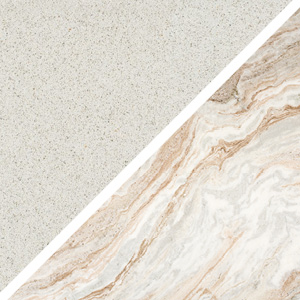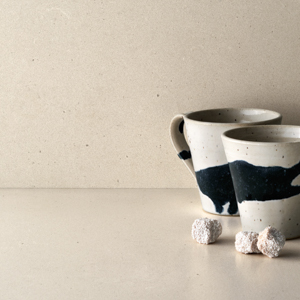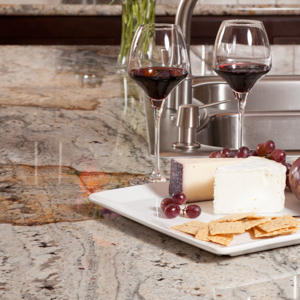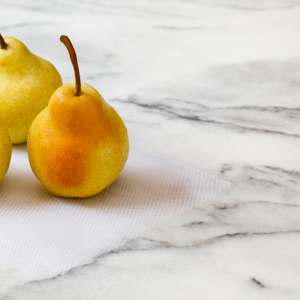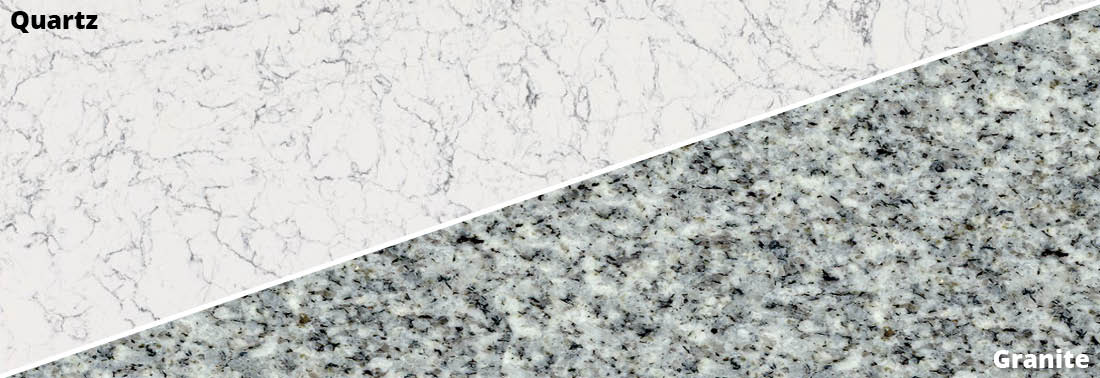
Quartz vs Granite: Choosing the Countertop That's Right for You
In the world of countertops, granite has been the official status symbol since the 1990s, but thanks to its ease of maintenance and variety of colors, quartz is quickly gaining ground as the high-end countertop of choice.
A few things to consider when deciding between granite and quartz:
Durability
Quartz countertops, also known as engineered quartz, are made up of at least 93% natural quartz. The quartz is crushed and combined with a resin to form any shape imaginable. Quartz is actually stronger than both granite and marble, which makes it more resistant to chipping and cracking.
Granite is a rock-solid material—literally. In fact, in terms of hardness, it’s second only to diamond among natural materials. A granite countertop is naturally resistant to chipping, scratching, and cracking. It is heat resistant, but you should not set a hot pan on a granite countertop.
With both materials, it’s a good idea to choose rounded edges and corners, which further reduces the chances of the stone chipping. Quartz and granite are both are extremely heavy—quartz is actually slightly heavier because it’s denser—and professional installation is mandatory.
Maintenance
The best quartz countertops are manufactured to be hygienic and safer for food preparation and consumption. Caesarstone and Silestone quartz countertops have been certified for safety by the National Sanitation Foundation, and some quartz stone is also certified Kosher. Quartz is nonporous and stain-resistant thanks to the manufacturing process and does not need to be sealed annually, making these countertops virtually maintenance free; quartz can be cleaned with simple soap and water.
A granite countertop is relatively easy to maintain, however, it must be sealed properly, and with regular use, should be resealed annually to keep it looking its best.
Appearance
Because quartz is an engineered stone, it is available in an almost infinite number of colors, patterns, and textures. White is always a popular choice, but you can let your imagination run wild when browsing the catalogs of colors available. Caesarstone quartz comes in styles that resemble granite, marble, concrete, and even crocodile skin, while Silestone offers quartz slabs in a black that gleans like onyx, suede finishes, and bright primary colors.
Granite is available in a variety of natural colors and textures. The color of a slab of granite is dependent on the types of crystals it’s made of—quartz, mica, feldspar, horneblend, or biotite. White, gray, black, pink, and orange are the most common colors available, but you may also find greens, browns, or blues in a slab of granite.
With a quartz countertop, unlike granite, it is possible to make the seams virtually invisible (solid colors hide seams better than patterns), whereas granite’s natural veins and coloring make it impossible to hide the seams in a countertop.
Affordability
When it comes to cost, quartz wins on nearly all fronts. Granite can be found for as low as $60 per square foot, but the cost climbs quickly from there. Quartz is available in a wide variety of colors and styles for between $65 and $95 per square foot. (Prices include material and installation.)
Sustainability
When it comes to sustainability, quartz is the clear winner. The quartz manufacturing process recycles waste materials, while granite or marble requires quarrying new stone each time.
No matter which stone you choose, a stone countertop is an excellent long-term investment and can significantly boost a home’s value on the real estate market.

